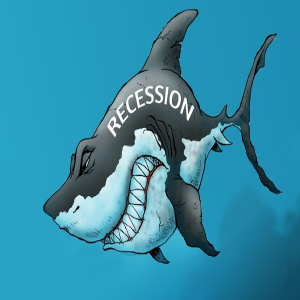With government shutdown looming, what happens to bird flu surveillance?
Published in Political News
As government agencies prepare for a potential shutdown, questions about the government’s response to a potentially burgeoning H5N1 bird flu pandemic are top of mind for many public health and agriculture officials.
Inquiries to the U.S. Department of Agriculture, which oversees the dairy industry and the new National Milk Testing Strategy — a program implemented last week, that when fully running, will test the nation’s milk supply for H5N1 virus — went unanswered. Questions to the Centers for Disease Control and Prevention were redirected to Human Health Services, which also went unanswered.
Because much of the H5N1 response is being coordinated at the county and state levels, it is likely those will continue, said researchers working outside the federal purview, including academics.
At a press conference Friday, California’s state epidemiologist, Erica Pan, and state veterinarian, Annette Jones, said they anticipate that the federal government will continue to provide support and help.
“Our CDC colleagues have noted that they are...activated for a response, and that they would be continuing to respond even if there’s a federal shutdown,” Pan said.
Jones said that in prior shutdowns, USDA veterinarians and “other specialists” were exempted, “so we would anticipate and hope that they would be similarly exempted” this time.
That said, there could be problems.
“A federal shutdown could slow the ability to confirm H5N1 cases, obtain and report genomic surveillance data, and slow the updates to other national and international partners,” said Rick Bright, a virologist and the former head of the U.S. Biomedical Advanced Research and Development Authority. “In most shutdowns, there are a handful of essential staff that are still required to come to work. However, these are mostly senior level management personnel, and not the general laboratory workers.”
Bright said the Health and Human Services secretary “has some discretion to determine priorities that must continue, though this is usually exercised when there is a declared emergency.”
While Gov. Gavin Newsom declared a bird flu state of emergency for California, the U.S. government has not.
Bright said state governments and agencies are likely to continue collecting milk samples “but those samples that will be shipped to USDA for testing will not get processed until the government reopens.”
Bryan Richards, the emerging disease coordinator at the U.S. Geological Survey’s National Wildlife Health Center said on Thursday in an email that National Animal Health Laboratory Network laboratories, such as the one testing milk at UC Davis, are typically run by universities, so they are likely to remain operational.
But it’s unclear whether the National Veterinary Surveillance Laboratory in Ames, Iowa — where confirmatory testing for bird flu in animals is currently taking place — will stay open.
It’s also unclear if the USDA’s Animal and Plant Health Inspection Service will remain open and how many people may be staffed, Richards said. “I assume they are shut down other than a few ‘critical’ positions.”
Communications staff are also likely to be affected. Currently, the USDA and CDC provide information to the public, including a running tally of the number of people, dairy herds, commercial poultry flocks, wild animals and birds that have tested positive for the disease.
On Friday, the CDC reported that 61 people had been infected with the virus during 2024. The USDA’s animal inspection service reported that 875 dairy herds across 16 states had been infected, including 659 in California.
California has been a hot zone for the outbreak, representing the vast majority of infected cattle herds, and more than half the people sickened by the virus. It is also where two raw milk producers have been quarantined and subject to recalls, and where every wastewater system tested by WastewaterScan — an infectious disease monitoring network led by researchers at Stanford and Emory University, with lab testing partner Verily, Alphabet Inc.’s life sciences organization — has shown a positive hit for the virus in the last several weeks.
WastewaterScan samples from 29 sites across the state, including around San Francisco, Los Angeles, San Jose and San Diego. There are large gaps in the Central Valley, although a site at Turlock — where there are several dairy processing plants — has had positive hits since August.
A 2024 USDA government shutdown “Contingency Plan” states that there are “excepted” activities that would not be affected by a funding freeze. These include “emergency circumstances such that the suspension of the function would imminently threaten the safety of human life or the protection of property.”
It is unclear if the federal government views the H5N1 bird flu contagion in domestic and wild animals as an “emergency.”
A similar CDC contingency plan is more detailed, but still not clear on the fate of bird flu surveillance, testing and investigations.
According to the document, the agency will continue to respond to “public health and natural emergencies, manage high-risk recalls, pursue criminal enforcement work and civil investigations related to imminent threats to human life... conduct for cause inspections of regulated facilities, conduct surveillance of adverse events reports for issues that could cause human harm, and other critical activities supporting the imminent safety of human life, as appropriate. “
In addition, the document states that staff should continue to address “other critical public health challenges, including drug shortages, and outbreaks related to foodborne illness and infectious diseases.”
The document notes that nearly 40,000 staff members are likely to be furloughed, while close to 50,000 will remain working.
©2024 Los Angeles Times. Visit at latimes.com. Distributed by Tribune Content Agency, LLC.




























































Comments